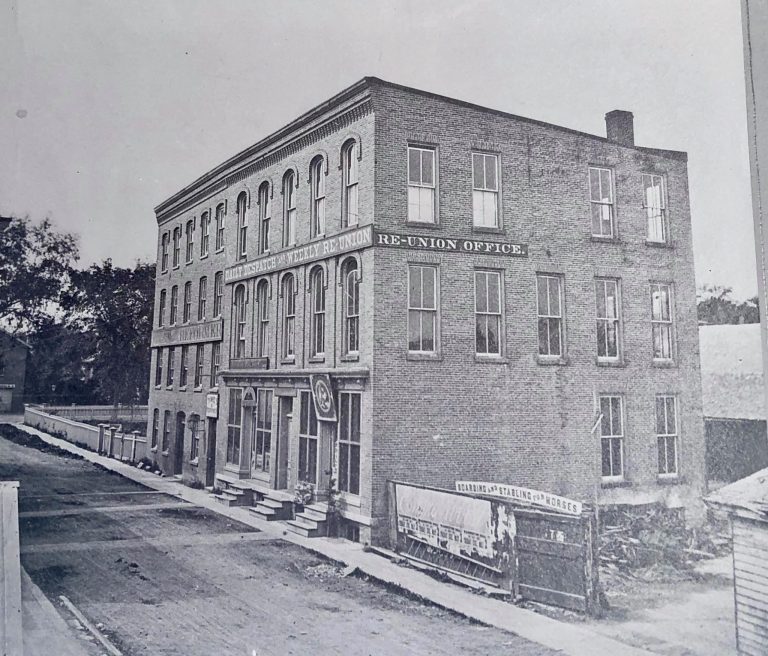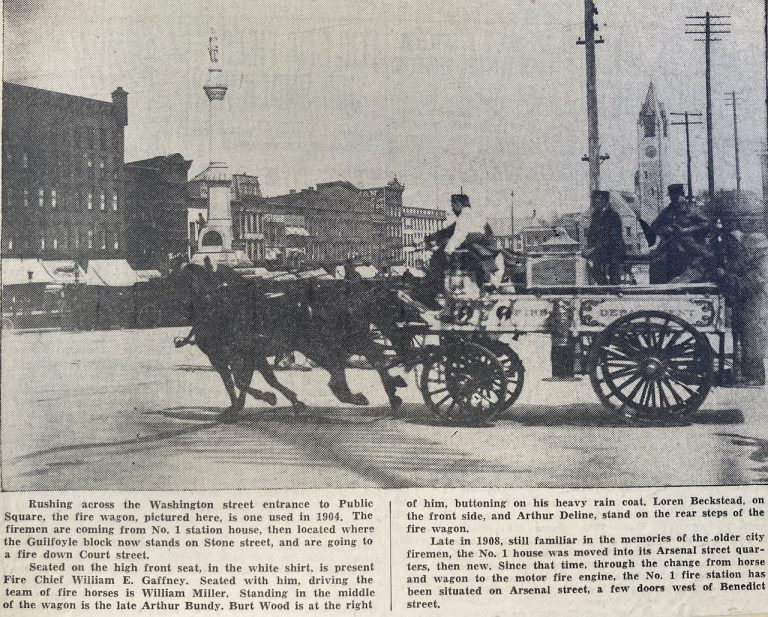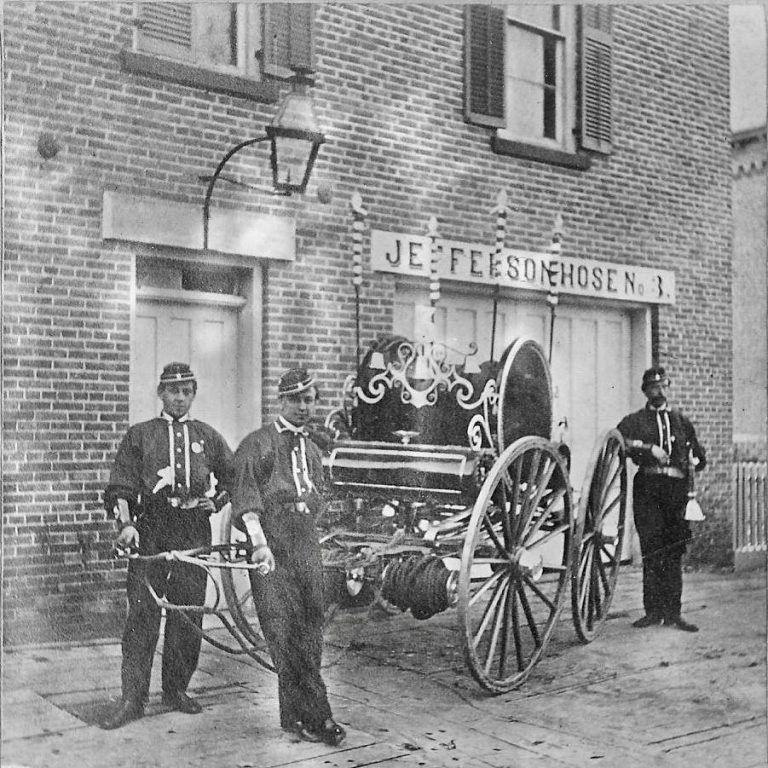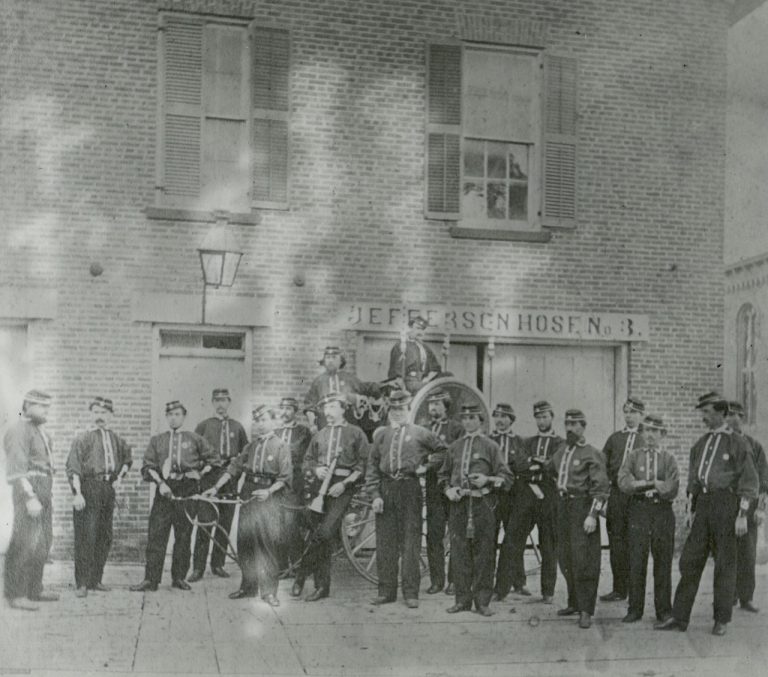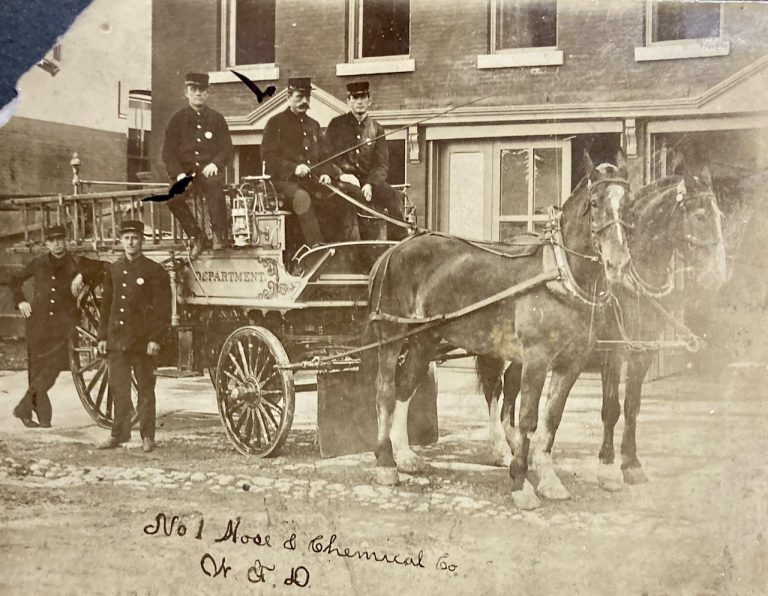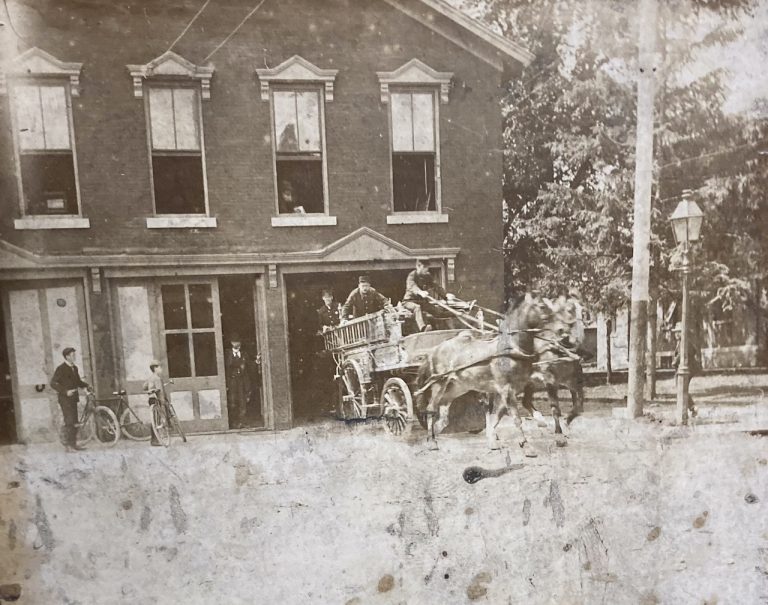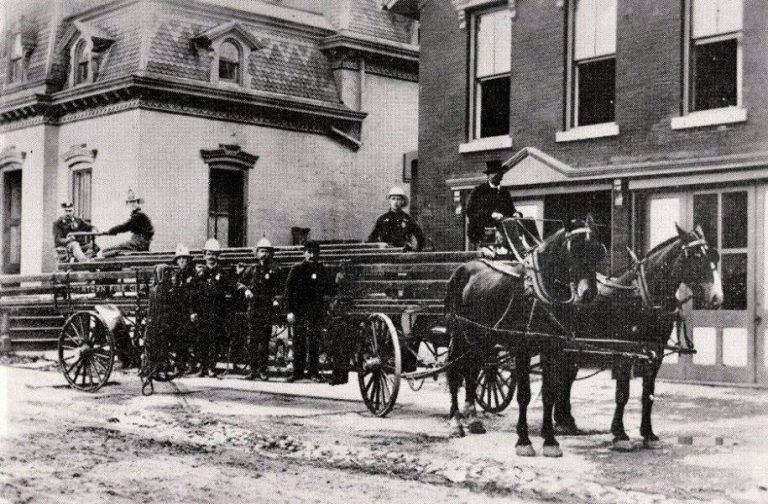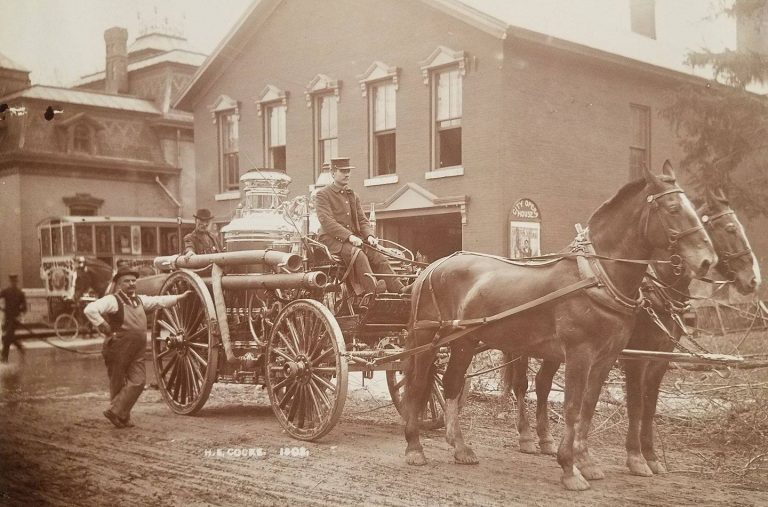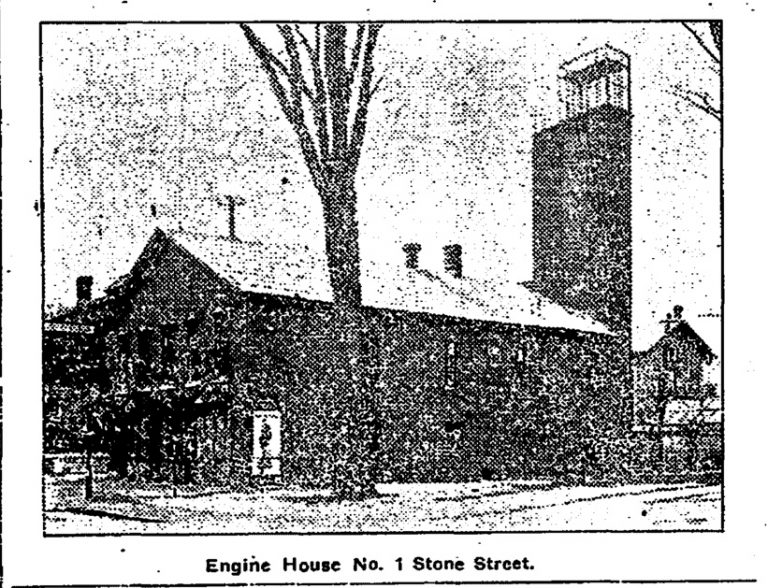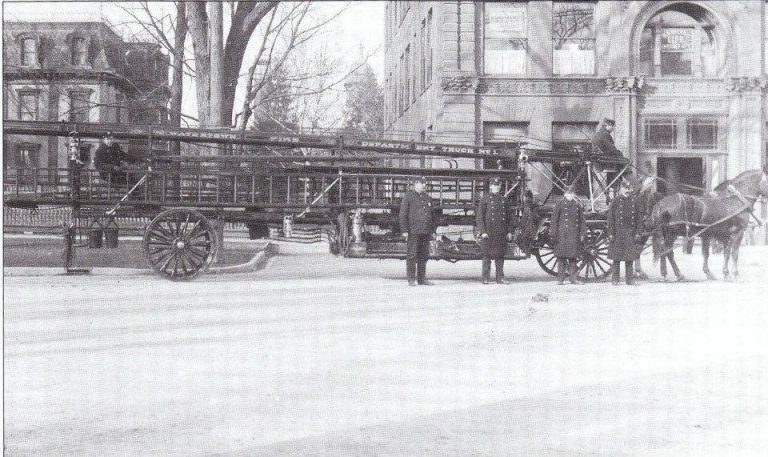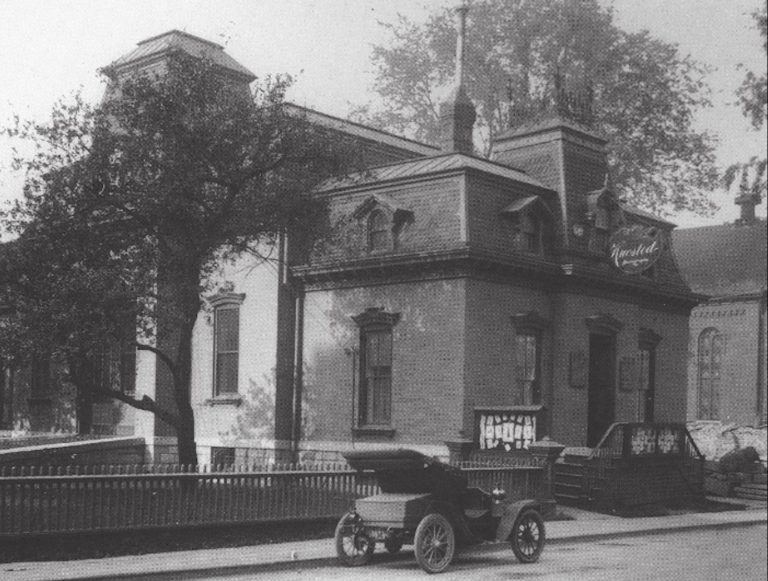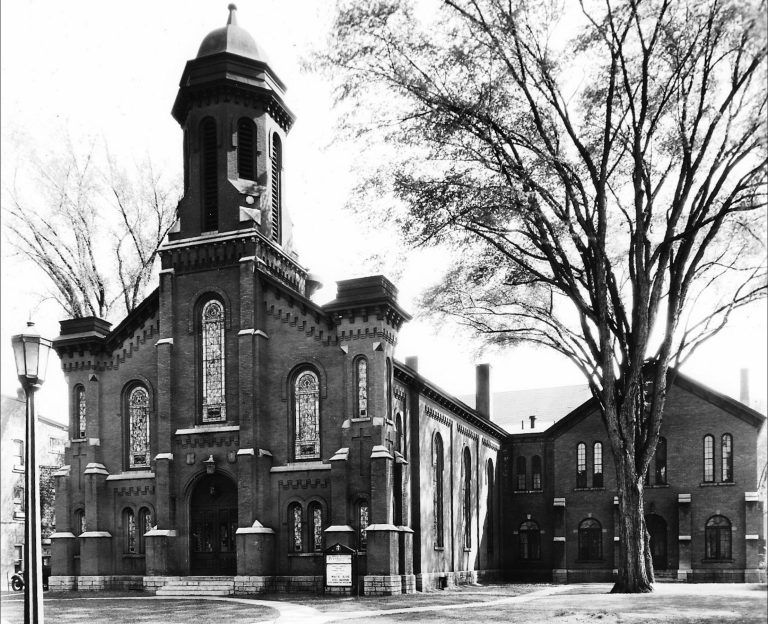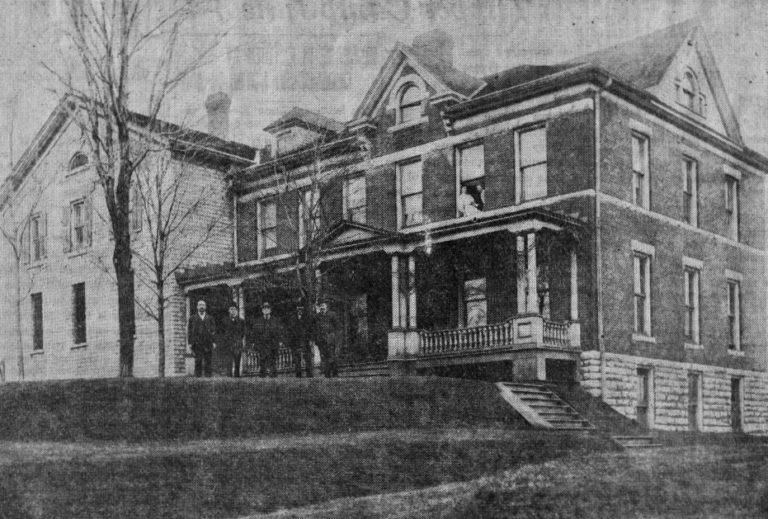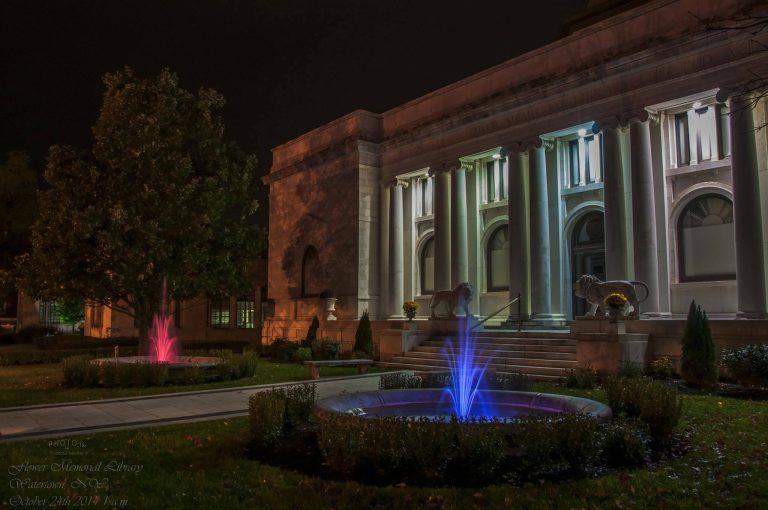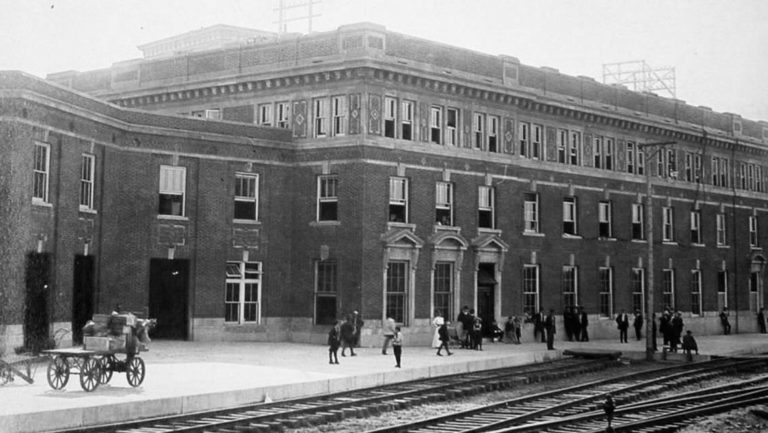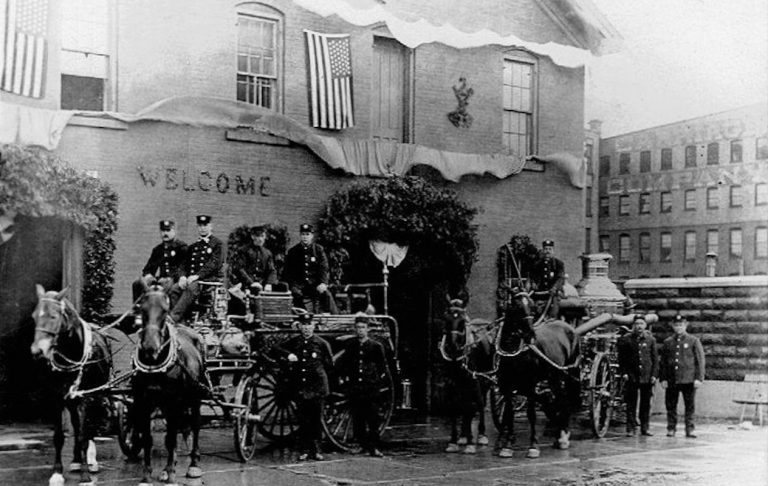Stone Street Fire Station: Engine House No. 3 and Then No. 1
In hindsight, history hasn’t been kind to the naming of fire stations in Watertown. So is the case with the Stone Street Fire Station, which is simply referred to here because confusion reigns supreme when trying to decipher some of the history, with ever-changing locations based on house numbers or names such as Neptune Hose, which doesn’t specify a locality.
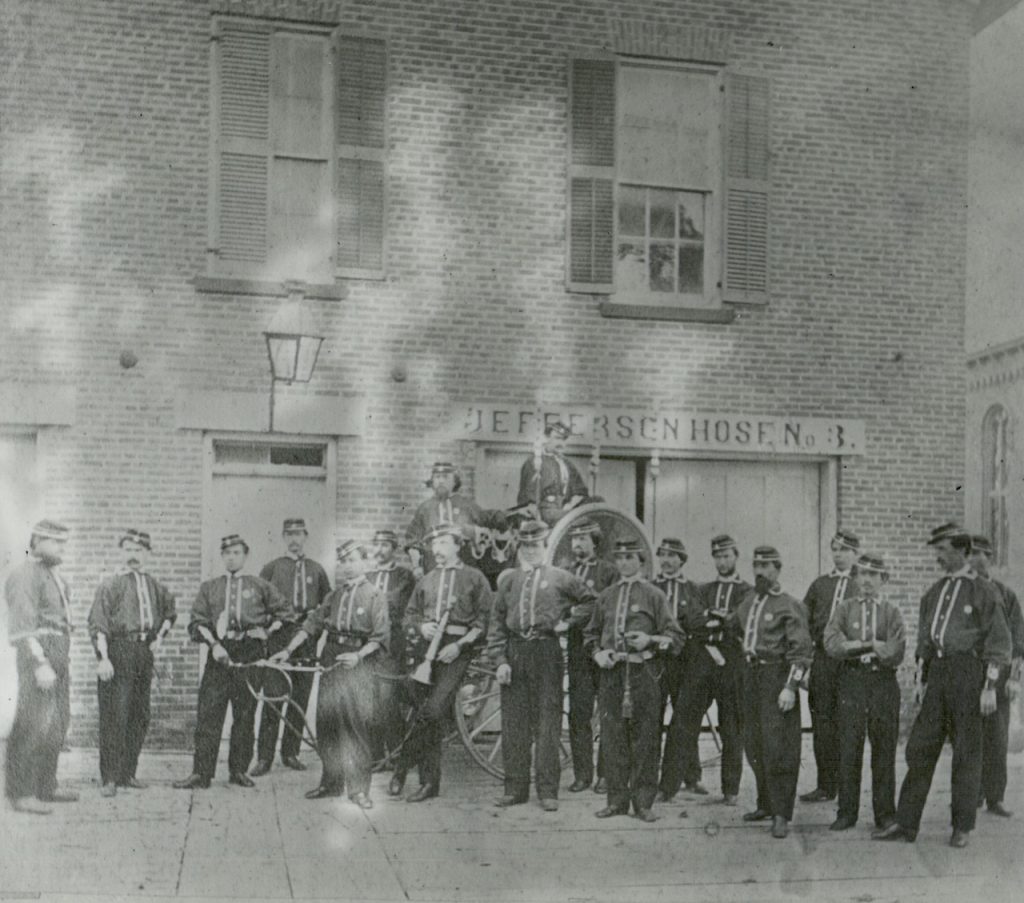
The first Stone Street fire station, built of brick in the 1830s, was located on the corner of Washington Street and Stone, near the Jefferson County Savings Bank. It was reported that during the razing of the then-Watertown National Bank and site excavation for the current bank, the remnants of the brick fire station’s foundation were found nearby.
In the April 3, 1851 edition of the New York Reformer, it was noted–
The Board of Directors also concur in recommending the erection, at the earliest practicable day, of a new engine house. One company is destitute of any house for their engine, and one is very much needed. The Directors take the liberty of suggesting, that as the village owns a lot on Stone Street large enough for this purpose, that a house be erected on the site of engine house No. 3, large enough for two engines and the hook and ladder companies.
Such a house, two stories high, and of proper dimensions of the ground, it is believed might be erected and properly partitioned so as to accommodate two engines and the hook and ladders, in a more economical manner than on any other plan, thus furnishing a room in the second story for the meeting of companies and the Fire Department.
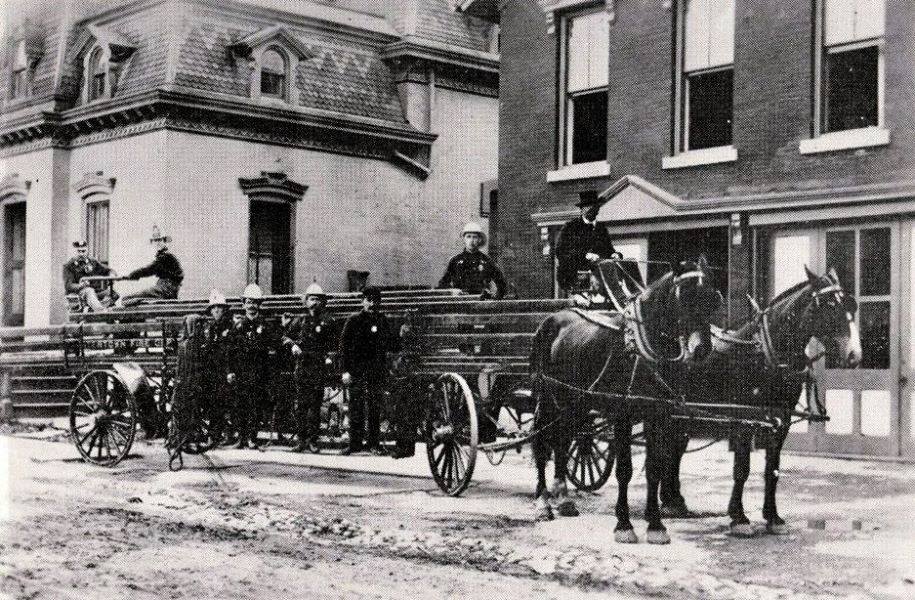
Jefferson Hose No. 3 was formed in 1845 when there were a mere 5,500 residents in the city, but it wouldn’t take possession of the Stone Street Fire Station until 1854, which fits within the timeline requested to have a new one built. The Watertown Daily Times noted years later that, after it was turned over to the volunteers, it had undergone many improvements, which may explain the difference in appearance between the photos, assuming it is indeed the same structure, which seems most likely considering the later issues and year it was abandoned.
Once the building was turned over from the volunteers to the exempt group, improvements to the structure were made. Such was the case when the exempt department initially took over, and the old hose tower had to be utilized for a hay chute. An addition was built to the tower and used as a practice tower for the firemen to train on scaling ladders, ropes, and life nets.
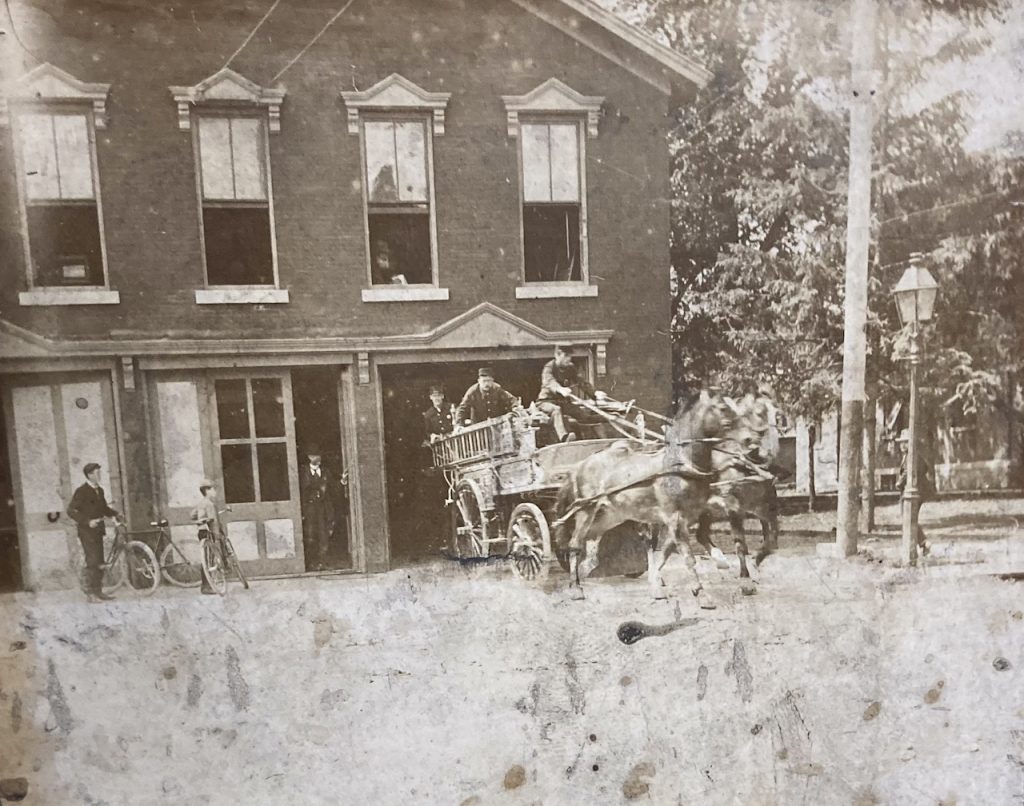
At one time, the three stations in Watertown were Engine House No. 3 on Stone Street, No. 1 on Factory Street, and No. 2 on Goodale Street. Goodale Street would eventually lose its station, and Factory Street would become Engine House No. 2 and Stone Street Engine House No. 1. Complicating things further, as evident on the photo below, each number was assigned various services, such as hook and ladder, a chemical unit, steamer, etc.
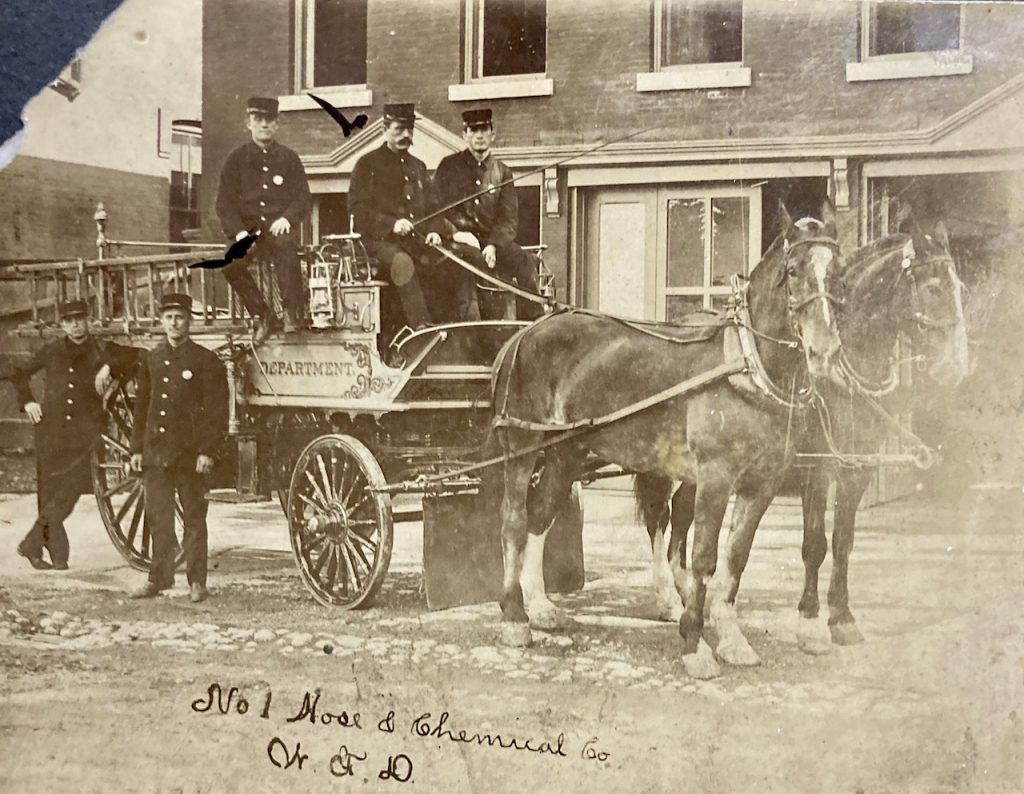
By the time Stone Street had become Engine House No. 1, it had far outgrown its original purposes. As the Watertown Daily Times noted as part of a review of the stations in 1906, partly as a result of the 1903 Otis House fire–
Originally built for a hand hose cart steamer and a light truck, it had in 1906 become the quarters for 15 men, 9 horses, a 82-foot aerial truck, 52 feet overall (the building is 69 feet long), a combination chemical and hose wagon and two engines.
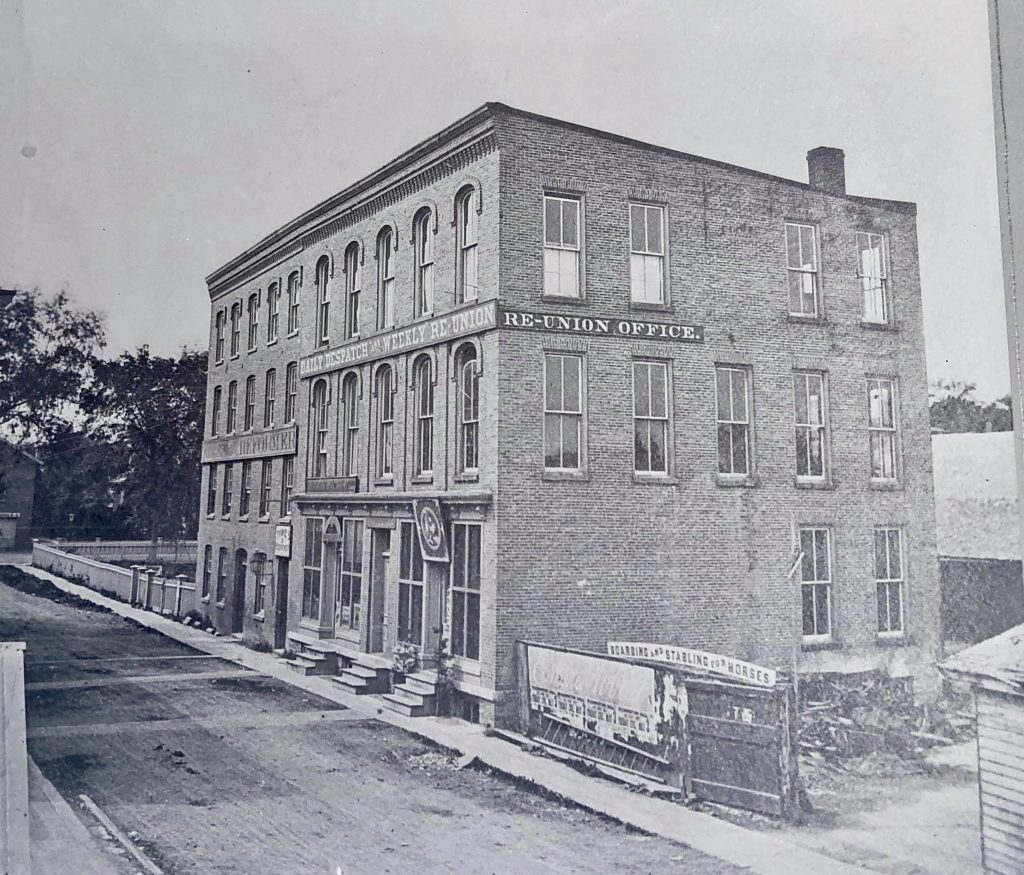
The conditions that plagued the Factory Street Fire Station plagued the Stone Street Fire Station as well with cramped, unventilated quarters on the second floor and a rather complicated storage of resources as reviewed by the Times in 1906—
The accompanying plan of the No. Engine house in Stone Street, drawn in a scale and with everything in its just proportion, gives a very fair idea of the conditions there. It does not (illegible) the crowding of horses and apparatus.
The dotted lines from the stalls to the apparatus show the path taken by each animal in reaching his place. The stall in the back right hand corner as you face the door is for the department’s reserve horse but the eight other horses rush out in masse each alarm it is necessary to arrange them in tiers, one behind the other, in order to house all, and to prevent two from trying to squeeze through the same hole at the once and thus block progress and delay the department.
The furnace only a few feet from the horses, keeping them too warm in the winter and endangering their health when they rushed from the warm stalls into the street on a zero night.
In January of 1906, taxpayers voted for $40,000 to erect new engine houses on Arsenal and Curtis Streets, which would become No. 1 and No. 3, respectively.
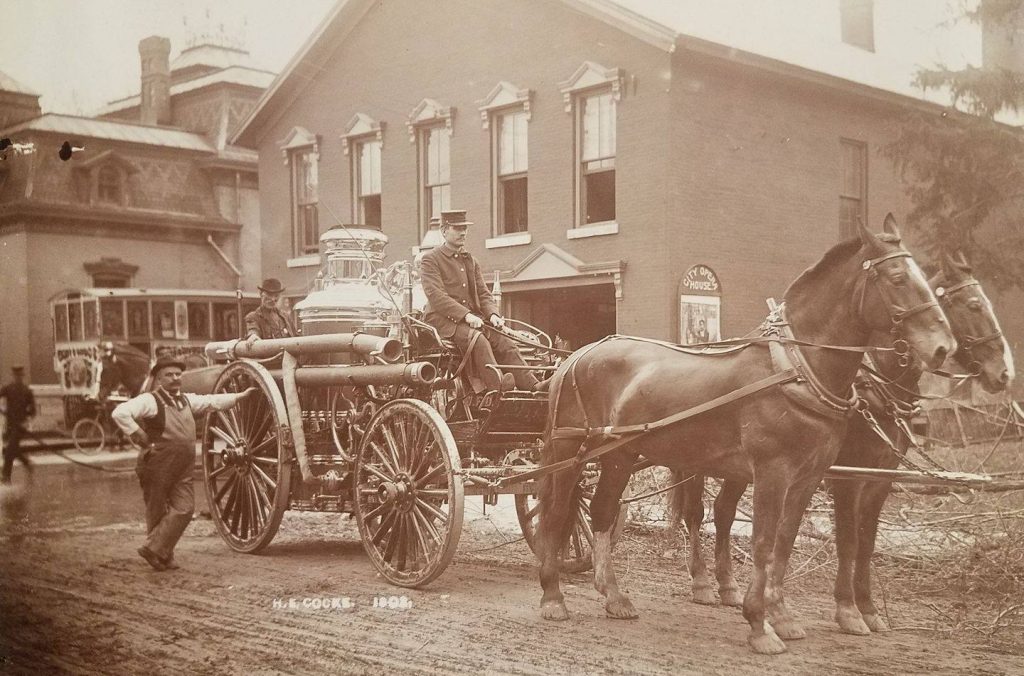
In the middle of August 1908, the Stone Street Fire Station would vacate the property and move to the new Arsenal Street Fire Station. The old station would be razed within weeks, the property now owned by D. E. Guilfoyle, and the Guilfoyle building would soon be erected.
Before this, Stone Street had a hospital, funeral homes, a fire station, and a church, all within mere blocks of one another. Guilfoyle was become the emergency transport services. It’s safe to assume that, if one were unfortunate enough to have an accident, it was best to have it on Stone Street.
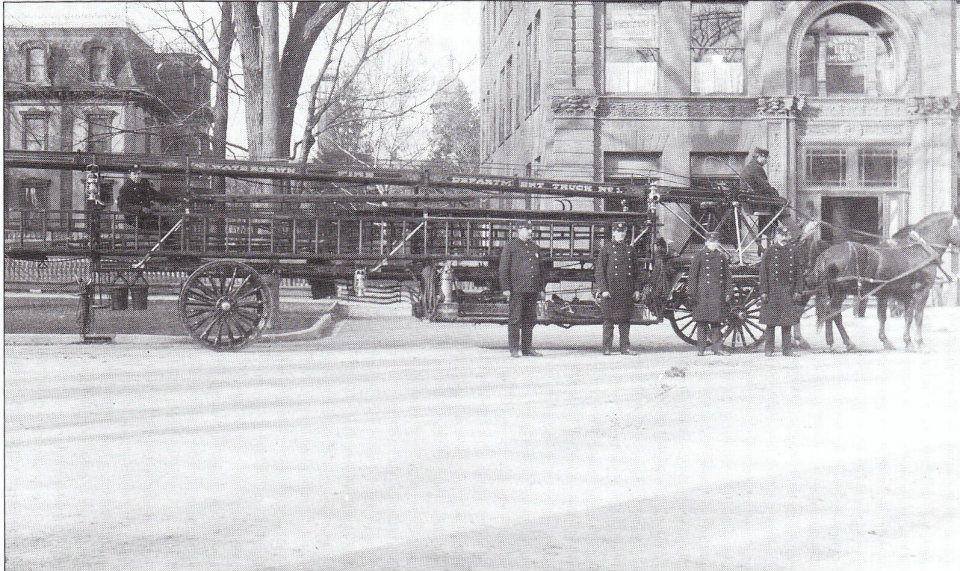
Interesting Tidbit
The Stone Street Fire Station had a mascot, but it wasn’t a Dalmatian. From the Watertown Daily Times–
The big black cat, Tom, mascot of Engine house No. 1, which has shared in the joys and sorrows of the firemen’s life for the past two years, seems to have resolved to partake some of the dangers, and is developing a love for the excitement that goes with the dash of the ladder truck for the fire.When the alarm came infor the Vale street fire Sunday he leaped upon the truck, and maintained a perilous position on the ladders near the tillerman, until the fire was reached, mewing excitedly the while.
Tom has been a the pet of the company for about two years since he came to them one winter night during a storm.If his love for excitement increases he bids fair to take the place of the famous dog that used to accompany the volunteers to every fire, until accidentally run down by the ladder truck one dark night.
